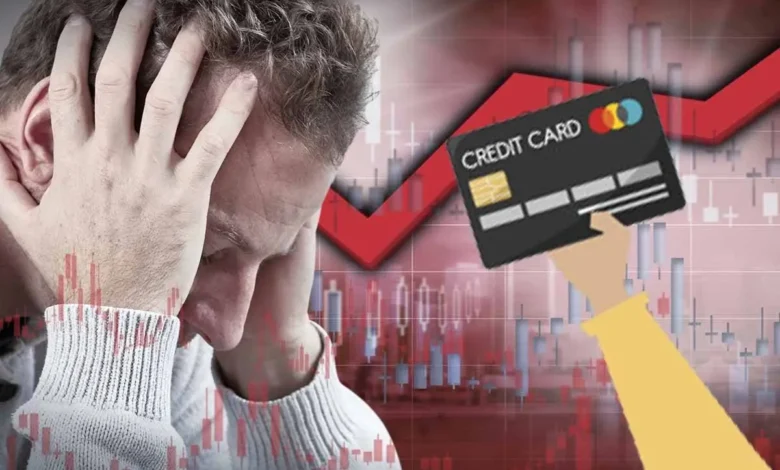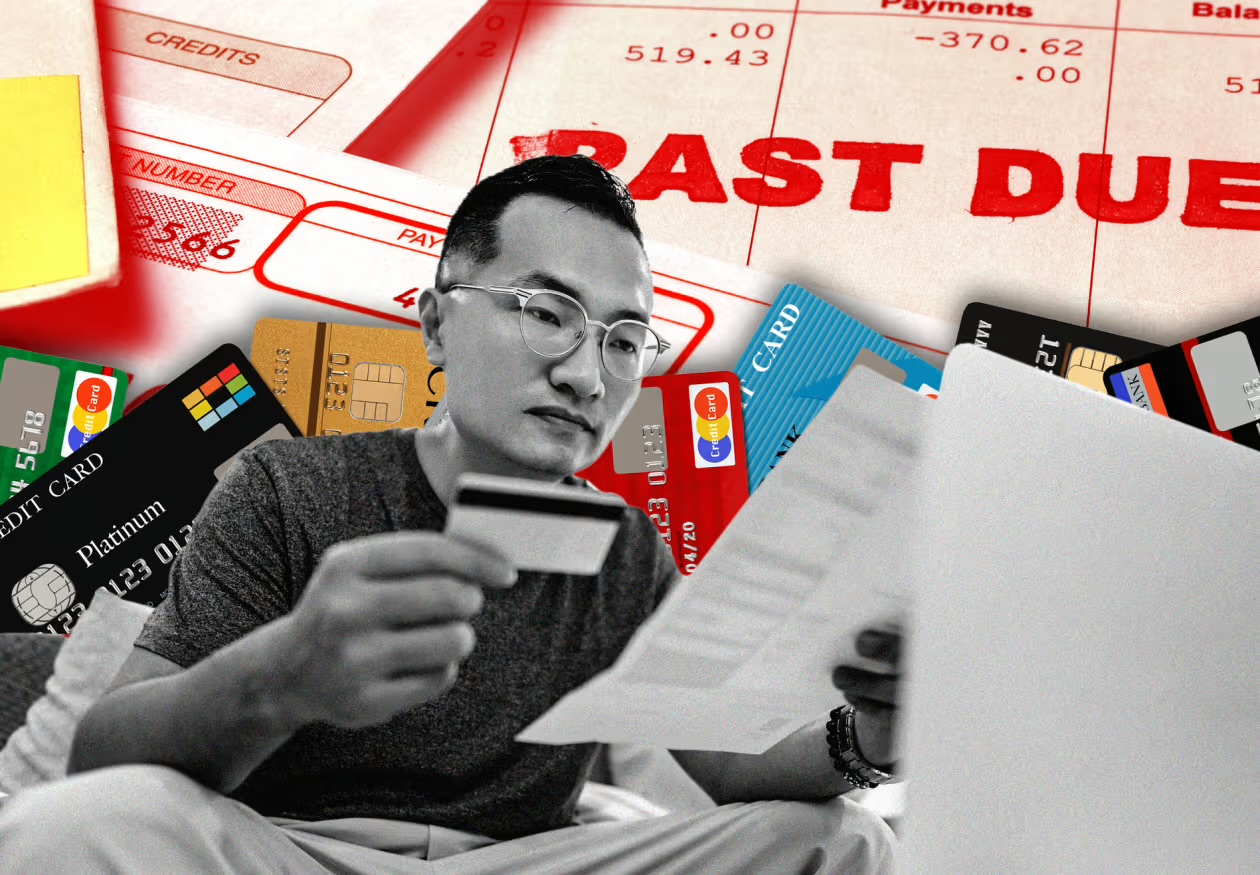Are Young Indians Trapped in Credit Card Debt? Why Defaults Are Rising Fast?
As of June 2024, the credit card defaults in India have risen to up to 1.8%. At first glance, this may seem slightly more positive than the 1.7% reported for December 2023 and 1.6% in March 2023, but the straightforward fact is much worse. Total outstanding credit card dues have seen a very good increase in the last one year. It has risen from the ₹2 lakh crore that it had touched in March 2023 to ₹2.7 lakh crore by June 2024. That is a huge jump compared to 2019 when the COVID-19 pandemic was unknown, and credit card dues stood at ₹87,686 crore. For the last five years, credit card debt has been growing at a CAGR of 24%.

In recent years, dependence on credit cards among young Indian millennials has become very prevalent. However, such reliance levels have precipitated a worrying trend in the practice. For instance, young Indians are maxing up their credit limits and going on to default after that. According to a Times of India report that cited Macquarie analyst Suresh Ganapathy, this has been ringing alarm bells in the banking sector. It is so grave that it is fueling the growth in India’s financial system of what’s known as bad loans or non-performing assets. Credit card dues have crossed ₹2.7 lakh crore as of June 2024, reported TransUnion CIBIL.
Current Credit Card Default Scenario
As of June 2024, the credit card defaults in India have risen to up to 1.8%. At first glance, this may seem slightly more positive than the 1.7% reported for December 2023 and 1.6% in March 2023, but the straightforward fact is much worse.
Total outstanding credit card dues have seen a very good increase in the last one year. It has risen from the ₹2 lakh crore that it had touched in March 2023 to ₹2.7 lakh crore by June 2024. That is a huge jump compared to 2019 when the COVID-19 pandemic was unknown, and credit card dues stood at ₹87,686 crore. For the last five years, credit card debt has been growing at a CAGR of 24%.
According to Macquarie’s Suresh Ganapathy, such a growth in defaults is a sign that pressure within unsecured loans, personal loans and credit cards- continues to grow. Credit card losses on a net basis today stand at 5-6%, while some companies have reported greater losses. For example, SBI Cards has already recorded a credit loss of 7.5% in just one quarter.
Why Millennials Default on Their Credit Cards?

Several reasons lead to this trend of young millennials increasingly defaulting on their credits. Understanding these reasons is necessary to understand the extent of the problem entirely.
Young millennials get themselves into debt on credit cards due to impulsive spending. Credit cards make it easy to make big buys without making prompt payments. Many children and young adults use credit cards when buying something on a whim, like a new electronic gadget or making travel reservations, hoping to pay it off over time. This is often compounded because credit cards have significant interest rate charges, sometimes as high as 48% per annum. Due to this reason, the debt continues to pile up, and they become incapable of even paying the minimum amount necessary.
The third cause behind this phenomenon is the rising demand for “Buy Now, Pay Later” plans. The BNPL plan offers consumers opportunities to buy and pay for things later in installments. While this might be very alluring and convenient, most of them end up overspending. Many young millennials continue to take advantage of these schemes without knowing the financial burden they are building up. As a result, the more they put on their credit card, the more bills and debt they have.
Often, youth debtors cannot settle their credit card payments. For this reason, they resort to other credits to service their debts. This practice is known as loan stacking. Simply put, they borrow some small personal loans to pay their credit card debt. However, it mostly makes things worse instead of solving the problem. Borrowers get trapped in a trap where they borrow another amount of money just to clear other outstanding debts. This puts an individual in greater danger of defaulting and subjects them to the stress of financial troubles.
A lack of financial education is another important aspect of this problem. Despite the increased usage of credit cards among young people, little education has been done on how they operate. They may not realize how interest quickly compounds or what can happen over the long run when they make only minimum payments. Financial education initiatives are scarce, and many millennials simply do not know what they need to know to handle their credit responsibly. Without awareness of the dangers of debt, they tend to make decisions that leave them vulnerable to serious long-term consequences.
Case Study: Rohan’s Story

To further clarify, let us take the example of Rohan. Rohan is 25 years old in Mumbai. This individual finishes his college education, gets his first job, and subsequently, his bank gives him a credit card. Rohan began using the first credit card for day-to-day purchases and significant spending, such as purchasing an iPhone on a plan. He thought of himself as being in control of his finances at first, but months after months would end by seeing the bill on his credit card continuously progressing upward, and he did not have any way of keeping up with these payments. He could only put in the minimum amount required each month.
As the interest on his unpayable balance kept mounting, Rohan’s debt grew. Finally, he took a smaller personal loan to pay the credit card bill. But this did nothing but worsen the situation because now he owed money on his credit card and yet another loan to repay. Rohan got himself into a cycle of debt, from which he seemed to get trapped.
How Banks Are Contributing to the Problem?
Part of the problem lies in how credit cards are marketed and distributed. Here’s what a senior official from a private bank says: “Most defaults happen with credit cards sold through agents.”. The agents thus receive bonuses for selling as many credit cards as possible. Many times, they do not first appraise the ability of the borrowers to repay the credits they are being advanced. This has resulted in reckless lending, with most borrowers getting approved credit cards and defaulting on them afterward.
Most major purchases can be obtained through banks with lower installation rates than rollover rates. However, not every borrower takes up those opportunities, and most continue to collect more debt by making the minimum payments.
The Reserve Bank of India is closely observing this development and has already taken some steps to curb it. In November 2023, RBI introduced new curbs reportedly aimed at controlling the rate at which unsecured loans are being advanced.
Credit cards account for almost 60% of the unsecured loan business’s annual growth rate of 25%. Since the introduction of the curbs, that growth has decreased to 15%. It is not an entirely successful intervention, but at least it tells one that RBI’s moves are having some effect.
Experts generally agree that although highly necessary and significant, regulatory moves launched since July 2007 cannot single-handedly prevent a general credit crisis.
“When considering recommendations, there must be an offsetting increase in moving people to become better financially literate and behave better in lending practices.” If this not the case, a general credit crisis looms large.
Therefore, the rising trend of maxing out credit cards among young millennials and default payments is serious in India. Several factors, including impulsive spending, the attractive nature of the BNPL schemes, loan stacking, and not being financially literate, give this impression that it is on the rise. The next thing is that if credit card debt grows further with each passing day, the threat of financial insecurity increases for an individual and the banking sector.
Now, the activity of both consumers and the regulators should be addressed. Young millennials have to be alerted to the risks of credit cards and work correctly to manage their finances. On the other side, banks must have more responsible lending so that a person is not sanctioned for credit they cannot pay off. Finally, the population’s education on financial literacy is tasked to assist young adults in improving their financial decisions and avoiding debt.
It is hoped that by attacking the root causes, the number of defaults on credit cards and the creation of a more stable financial future will be achieved about young people in India.




